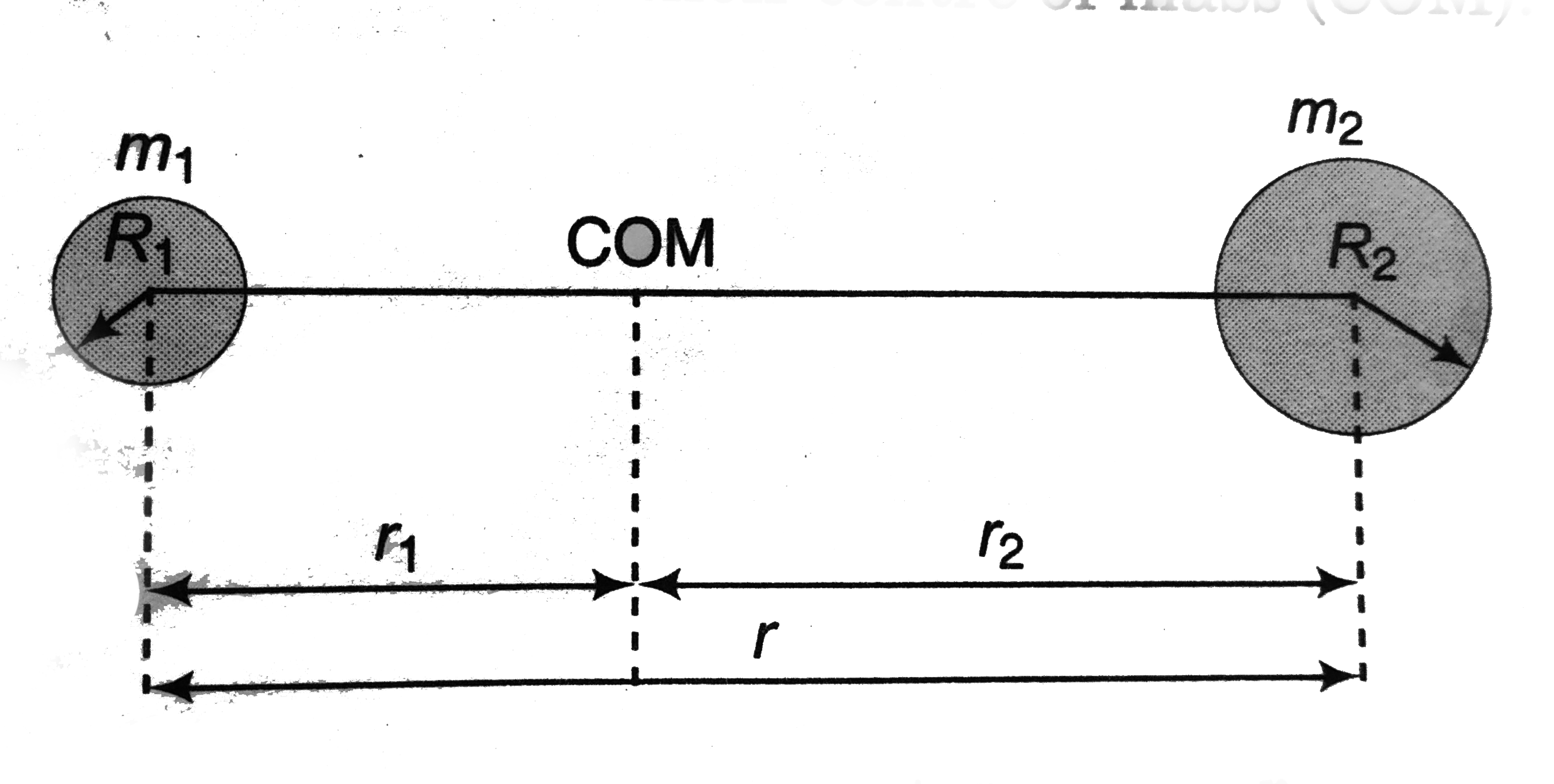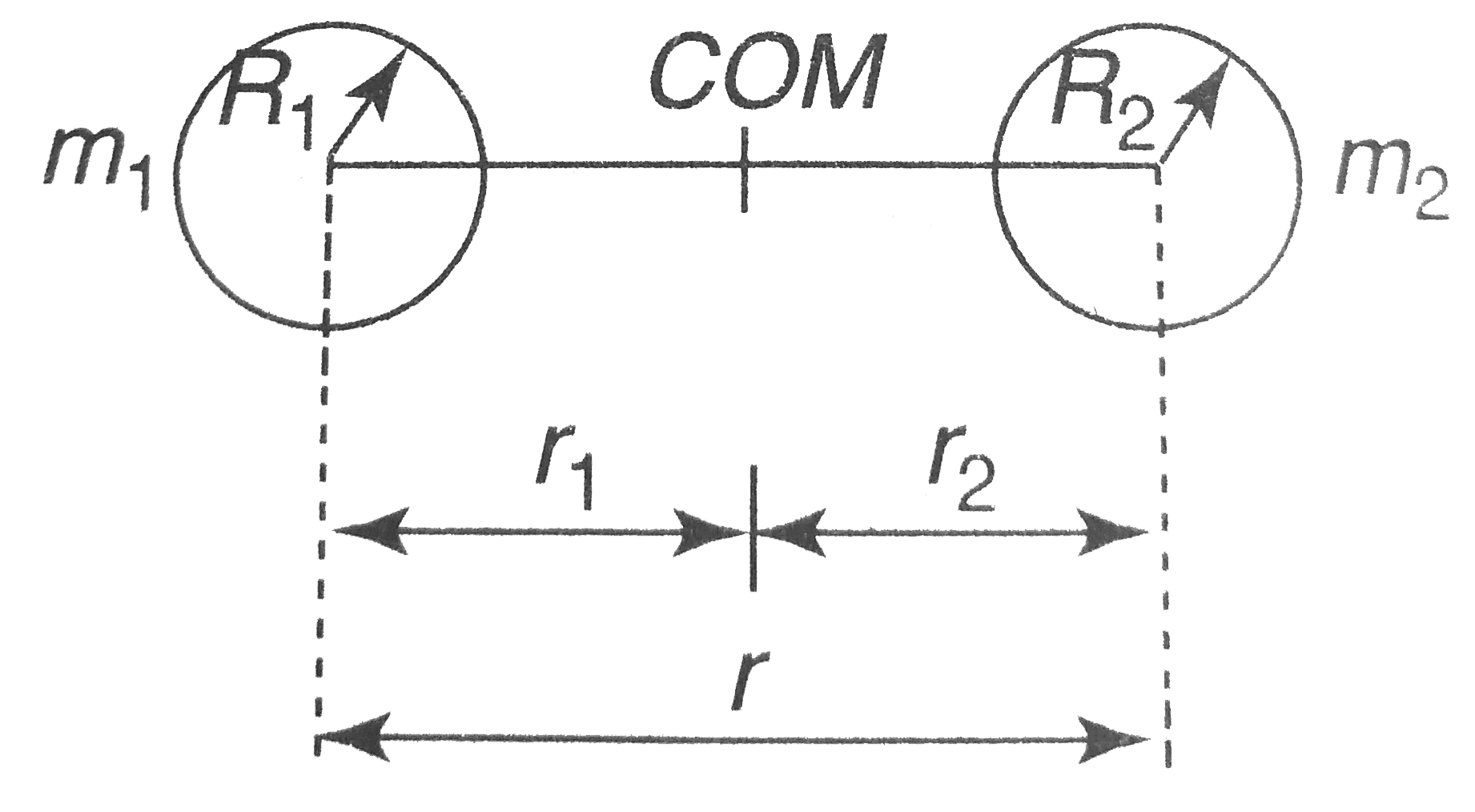Binary stars of comparable masses and rotate under the influence of each other's gravity with a time period . If they are stopped suddenly in their motions, find their relative velocity when they collide with each constant of gravitation.
Both the stars rotate about their center of mass (COM).

For the position of ,
Also
or
But,
or ..(i)
Applying conservation of mechanical energy, we have
..(ii)
Hence, reduced mass
and relative between the two stars.
From Eq. (ii), we find that
Substituting the value of from Eq. (i), we get
Topper's Solved these Questions
- GRAVITATIONBOOK - DC PANDEYCHAPTER - GRAVITATIONEXERCISE - Exercise 13.1
5 Videos
- GRAVITATIONBOOK - DC PANDEYCHAPTER - GRAVITATIONEXERCISE - Exercise 13.2
9 Videos
- GRAVITATIONBOOK - DC PANDEYCHAPTER - GRAVITATIONEXERCISE - Solved Examples
16 Videos
- GENERAL PHYSICSBOOK - DC PANDEYCHAPTER - GENERAL PHYSICSEXERCISE - INTEGER_TYPE
2 Videos
- KINEMATICSBOOK - DC PANDEYCHAPTER - KINEMATICSEXERCISE - INTEGER_TYPE
11 Videos
Similar Questions
Two masses m1 and m2 at an infinite distance from each other are initially at rest, start interacting gravitationally. Find their velocity of approach when they are at a distance r apart.
View SolutionTwo particles of masses m1 and m2 initially at rest a infinite distance from each other, move under the action of mutual gravitational pull. Show that at any instant therir relative velocity of approach is √2G(m1+m2)/R where R is their separation at that instant.
View Solution
Knowledge Check
Binary stars of comparable masses rotates under the influence of each other's gravity at a distance [2Gω2]1/3 where ω is the angular velocity of each of the system. If difference between the masses of two stars is 6 units. Find the ratio of the masses of smaller to bigger star.
 A4:10B1:7C2:8D3:9
A4:10B1:7C2:8D3:9Two particles of mass m1 and m2, approach each other due to their mutual gravitational attraction only. Then
Aacceleration of both the particles are equal.Bacceleration of the particle of mass m1 is proportional to m1Cacceleration the particle of mass m1 is proportional to m2.Daccelaration of the particle of mass m1 is inversely proportional to m1.Two particles of mass m1 and m2, approach each other due to their mutual gravitational attraction only. Then
Aaccelerations of both the particles are equal.Bacceleration of the particle of mass m1 is proportional to m1.Cacceleration of the particle of mass m1 is proportional to m2.Dacceleration of the particle of mass m1 is inversely proportional to m1.
A uniform rod AB of mass m length 2a is allowed to fall under gravity with AB in horizontal. When the speed of the rod is v suddenly the end A is fixed. Find the angular velocity with which it begins to rotate.
View SolutionThe masses of two stars are m1 and m2, and their separation is l. Determine the period T of their revolution in circular orbits about a common centre.
View SolutionTwo stars of masses m1 and m2 form a binary system,revolving around each other in circular orbits of radii r1 and r2 respectively.Time period of revolution for this system is

View SolutionThe velocities of two particles of masses m1 and m2 relative to an observer in an inertial frame are v1 and v2. Determine the velocity of the center of mass relative to the observer and the velocity of each particle relative to the center of mass.
View SolutionTwo particles of mass m1 and m2 are approaching towards each other under their mutual gravitational field. If the speed of the particle is v, the speed of the center of mass of the system is equal to :
View Solution
